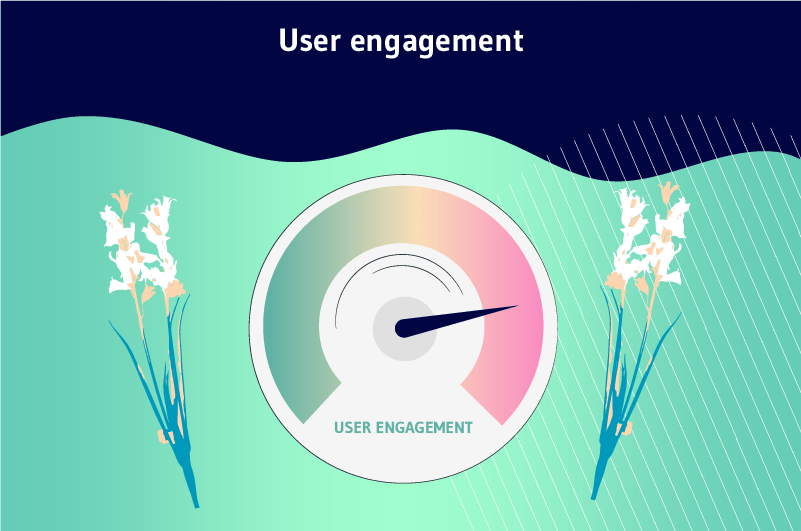User engagement is the term used for any interaction users have with your brand, website, product or app. It can be as simple as logging in, signing up for a premium subscription, purchasing a product or any specific action you define.
For any business, user engagement is a strong indicator of the value users find in its products and services.
However, in a Marketing Week survey, 78 % of respondents said they use engagement as a measure of marketing returns.
But at the same time, 39% thought business leaders didn’t take the concept seriously.
We invite you to find out what engagement actually is and how to increase it for your website.
Chapter 1: What is User engagement?
User engagement, also called user engagement, is a fairly simple term, but often leaves confusion in most of its definitions.
And for that, we will in this first chapter of our article, give you a simple definition of the term and some other details.
1.1) What is user engagement?
As a reminder, it is any very deep relationship between the user and your brand or website. In other words, engagement reflects a willingness to engage with your offer, and it serves as an indicator of genuine interest
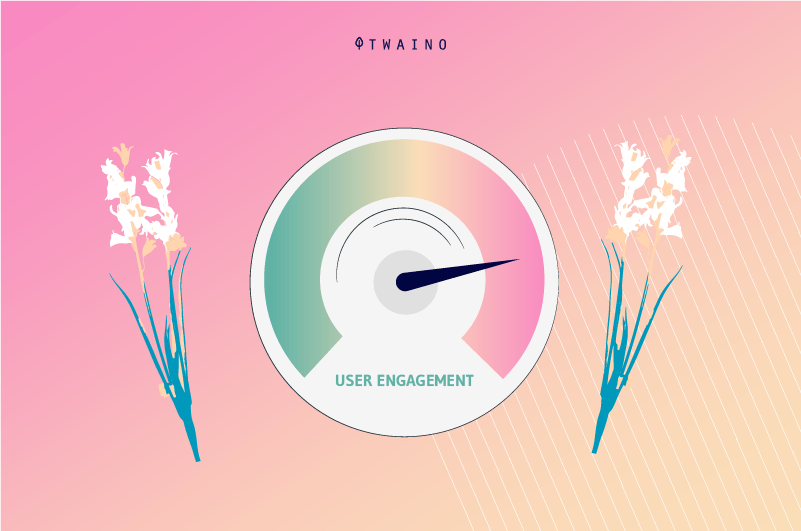
Note, for example, that clicks can happen by mistake, but engagement is always an intentional action.
And within this population of users who show interest in your brand or website, we can distinguish three different categories of users.
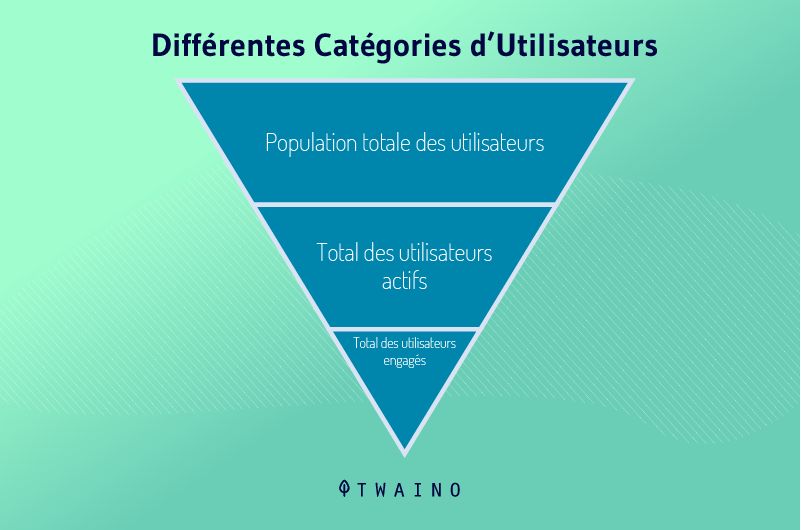
- All users: This is the largest segment you have and includes all users who have visited your site or purchased your product.
- Active Users: This is a smaller group, as it represents users who have taken a meaningful action on your site. A user who has browsed a few pages, signed up for your newsletter or logged into your app a few times, can be categorized in this group. You have a good chance of moving them to the next stage of the funnel if you can meet their needs.
- Engaged Users: Engaged users are those who have already taken larger or more useful actions. This could be a purchase, a weekly, daily visit to your site, or any other threshold you use as a benchmark.
But no matter how you define user engagement, the main goal is to measure key metrics to know if your users find your product valuable enough to continue using it.
1.2. 3 benefits of high user engagement
An engaged user to your product or website, is a huge opportunity to increase revenue for your business.
Overall, here are some of the benefits we have listed:
1.2.1. More loyal customers
Unlike bored and distracted users, highly engaged users are more likely to become loyal consumers
After all, personalized content not only engages users, but also leaves a stronger and lasting impression on them. Customers who find a brand more memorable will typically return.
In addition, engagement helps develop customer-brand relationships. The more attached customers feel to a particular brand, the less likely they are to seek similar products or services from competitors.
The power of loyalty can be seen with major sports brand Nike, which uses interactive Web content to drive user engagement.
According to a report from Gartner, these marketing efforts allow Nike to go beyond reward programs and gain loyal customers who are willing to significantly increase their spending on sportswear.
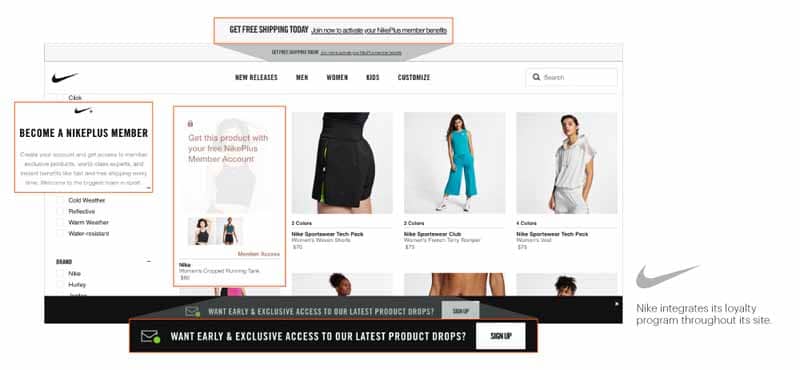
As a result, Nike’s impressive ranking on the top 10 MBLMs for customer intimacy and profits have skyrocketed since the brand first adopted this revolutionary approach.
1.2.2. Brand advocacy by loyal customers
Loyal customers are not only valuable to a company’s customer base
They benefit companies immensely by acting as brand advocates, enthusiasts who are happy to spread the word about a company because they have had such a great experience with it.
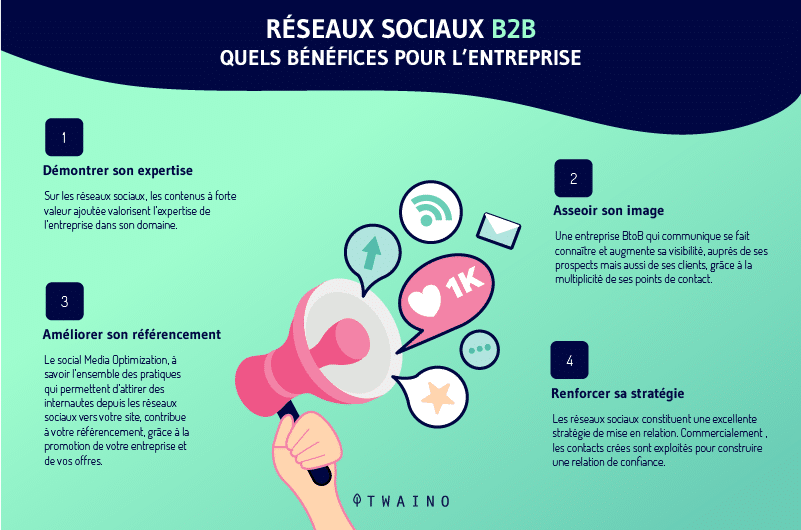
While brand advocacy has made waves through influencer marketing in recent years, companies don’t need to shell out on major YouTube and Instagram celebrity endorsers to get that publicity
On a much smaller scale, but just as effective, engaged customers spread the word to their own networks without expecting free products or other rewards from the company in return.
In today’s age of social proof, most consumers turn to user reviews or recommendations from loved ones before making any purchases
And the more users see brands mentioned by highly engaged customers, the more likely they are to interact with them and become engaged customers themselves.
1.2.3. Shortened sales cycles
Customers with low engagement can eventually convert, but it usually takes time.
In other words, the less engagement companies see in their customers, the longer their sales cycles are, even among customers who claim to be loyal to specific brands.
Engagement can, however, drive strong user interest and accelerate sales.
1.3. Difference between user engagement and user experience
As defined above, user engagement is an evaluation of a person’s response to certain offerings, such as a product, service or website
However, the level of engagement of a person can be reflected in the interaction or observation of the user’s behavior
A website user, for example, may click on links, comment, download documents and watch videos, among other possibilities
This shows how much users like the app, which in turn directly affects the app’s success and revenue. It also shows how well the app performs against its competitors.
User experience (UX), on the other hand, refers to an individual’s attitudes and emotions about using a particular product, system or service
It encompasses the experiential, practical, meaningful, emotional, and valuable aspects of the interaction between the individual and the website.

In general, user experience includes how the user perceives aspects of the system such as usefulness, ease of use, and efficiency.
In conclusion, user engagement directly correlates with overall profitability
User attention is a scarce resource, and if users choose to spend their time on a website, it proves that they find value in it
Engagement allows businesses to make money through subscriptions, sales and company services
Highly engaged users feel compelled to buy, return and share the product or service with friends.
As for user experience, it includes a person’s judgments about aspects of use, which persuade users to use the product consistently.
Chapter 2: What are the metrics for measuring user engagement?
Actually knowing the behavior of each of your users allows you to know what they are interested in and what you still need to do.
And to do that better, you need to know some metrics that are as follows:
2.1. MAU, WAU, DAU
There are several ways to track users, such as
- MAU: Monthly Active Users;
- WAU: Weekly Active Users;
- DAU: Daily Active Users
One way engagement metrics can give you deeper insight into your company’s performance is by comparing daily active users with monthly active users.
This allows you to determine the retention or visibility of your customers. Knowing your retention rates also allows you to calculate the lifetime value of customers.
When you look at the DAU/MAU ratio, popularized by platforms like Facebook, you see the number of monthly customers who interact with your product or service in a single day window. The equation is:
The number of daily active users divided by the number of monthly active users = DAU/MAU percentage.
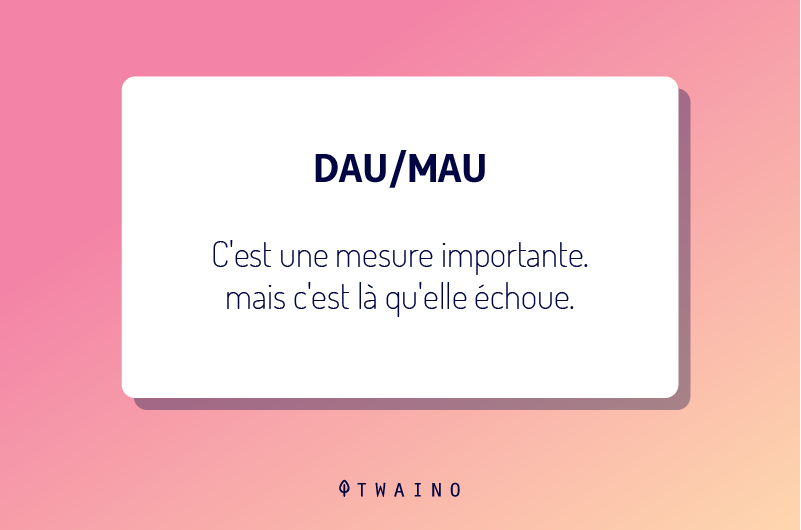
Understanding how some users interact with your service or website versus others can give you insight into potential areas of opportunity.
Some of the things you can learn from these user engagement metrics are:
User base, usage trends, and what users like or dislike about your app or site;
- What areas to improve;
- Highlight areas where bottlenecks are occurring or may need to be redesigned;
- Take a closer look at user abandonment through segmentation.
2.2. Time on Page
Today, users are overwhelmed with content on the web, this would mean that if you can hold their attention, you can easily put them on the path to your goals.
Thus, the time they spend on your pages is an excellent indication of user engagement.

According to one source, it takes about 2 minutes to read 500 words. That said, if you have a blog post with 1,000 words and users spend 3-5 minutes on a page, you have engaging content and engaged users.
2.3. section frequency
Session frequency or interval is often confused with session length. However, session frequency is simply the time between two consecutive sessions.
While session duration shows you how engaged your users are with the application, session frequency shows how often your users return to visit your pages.
When monitoring session frequency, keep an eye out for trends in how people are using your app or site. If they don’t use it for a good while, you need to ask yourself questions.
2.4. Bounce Rate
Your bounce rate is the percentage of people who leave your site after visiting the first page itself.
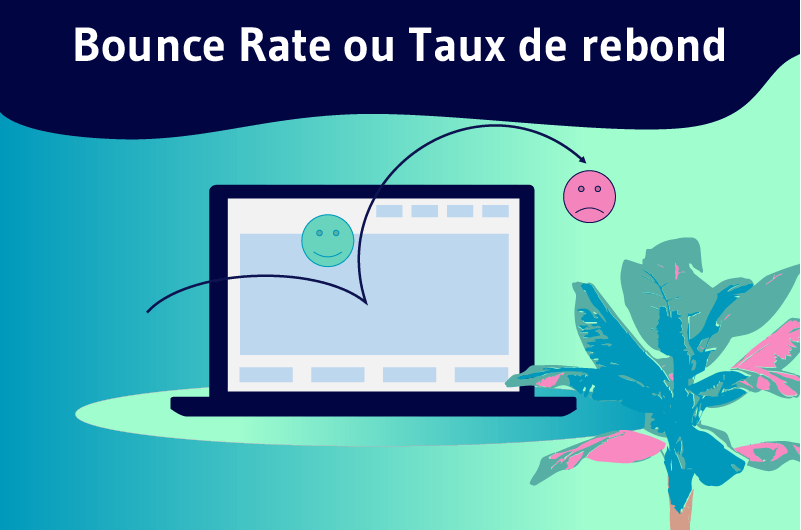
A higher bounce rate indicates that your users are not finding value in what they are looking for on your site or on other branded pages
The bounce rate ranging from 26 to 40% is excellent. While 41 to 55% bounce rate is the average line and 56 to 70% is above average
If your site’s bounce rate is above 70%, it’s time to redesign your homepage, blog and social media content to make it more relevant to your users
You can perform A/B testing, split URL testing to define the right content and structure.
2.5. Net Promoter Score (NPS)
Your net promoter score indicates how likely your users are to recommend your product to others.
Here’s how you can find out your net promoter score:
Survey a small sample of your users. Give them the opportunity to rate your brand on a scale of -100 to 100, where:
- 0 indicates neutral;
- -100 indicates unlikely;
- Above 50 indicates excellent;
- And above 75 indicates a world-class NPS.
The NPS score analysis scale is shown on a scale of (-100 to 100) :
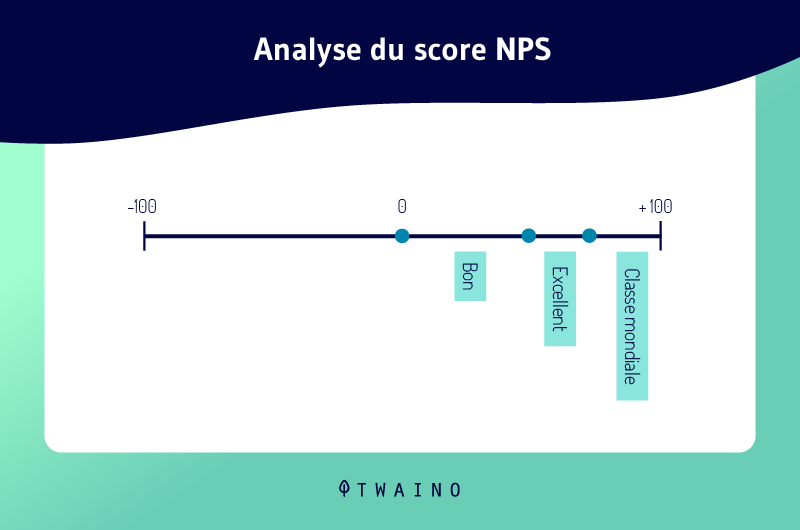
You can calculate NPS using the formula below:
NPS = % Promoters – % Detractors
Promoters are customers who respond with 90 or 100. Passives are customers who select 70 or 80. Detractors are your customers who select between 0 and 60.
If your NPS score is below 0, it’s high time you improve your customer satisfaction levels, then conduct repeated surveys to track your product’s progress.
Chapter 3: How to increase user engagement?
If you’re familiar with user engagement metrics, you probably have an eye on what’s wrong and what you need to revise.
In general, here are some golden rules to follow to better engage your users:
3.1. deliver the best customer experience
According to data from Forbes and Arm Treasure74% of customers are likely to buy based solely on their customer experience.
When a user lands on your site and immediately enters the chat window, you need to make sure that you provide them with the answers to their concerns that they want.
Nothing on your website should give users the impression that they are not comfortable with the navigation.
Customer experience should be one of your top priorities when it comes to engaging your audience. Here are some ways you can make sure your user/customer has a positive experience with your brand:
- Welcome your new users and provide them with information on how they could benefit from your product;
- Make your website attractive and simple enough for users to take action;
- Listen to what your customers want from you and resolve their concerns;
- Thank your users for reviews and make them feel valued;
- Ask your users what they would like to receive from your marketing campaigns. And optimize your campaigns according to your preferences;
- Offer live chat to your users while keeping response time to a minimum.
According to chat statistics, 82% of users have more confidence in the answers they get in live chat when they have concerns.
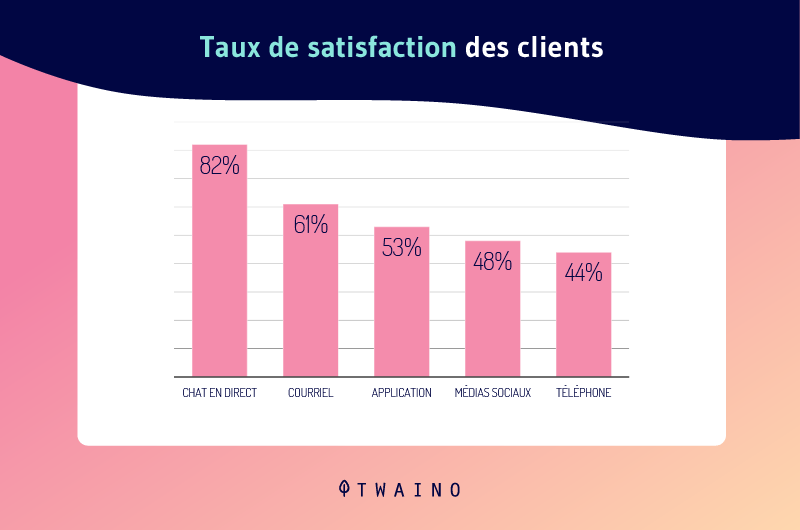
In addition, a study by Hubspot shows us that 90 % of consumers expect and consider an immediate response as a very important factor when they have customer service questions
Here are some ways to effectively use live chat to drive user engagement:
- Integrate live chat systems into your website and actively offer conversations with users to keep them engaged with your product. Enabling video chat options can also provide more humanized interactions with your customers. Live chat and video chat can dramatically improve your customer satisfaction rating;
- Collect customer feedback after a live chat session to gauge the level of satisfaction they have with your brand and to actively work on existing gaps in your product.
3.2. Personalize all customer communication channels
According to some sources, 72 % of consumers only interact with messages that are personalized to meet their specific needs and interests
Personalization adds the much-needed human touch throughout your customer journey and encourages your users to interact with your product frequently.
From the statistics, it’s clear that customers tend to engage more when messaging is personalized. But personalization goes far beyond first names today
Here are some tactics with which personalization can be used to increase user engagement:
- Personalize the user onboarding experience by understanding each customer’s expectations with your product and addressing their specific needs during onboarding. For example, offer tutorials based on the customer’s current subject matter expertise;
- Email marketing is another front where effective personalization can increase user engagement. Segment your users into appropriate lists based on user journey stages, demographics, product usage metrics, etc. and send ultra-personalized emails to each of your email lists.
In-app personalized messaging can be very useful to increase user interactions.
3.3. create interactive and engaging content
According to 72 % of marketers, creating engaging content is responsible for increased customer engagement
The key to improving engagement is to publish informative and useful content that will be highly beneficial to your users.
Here are some ways content marketing can be used to increase user engagement:
- Optimize the user onboarding experience by providing comprehensive product tutorials and extensive documentation that will help users fully understand your product. Creating educational content for your users during onboarding is extremely important, as it will help them become familiar with your product;
- Also focus on creating more case studies, customer testimonials, and customer stories to improve user engagement.
3.4. Use an omnichannel approach
Companies that use a strong omnichannel approach to user engagement are known to build loyalty 89 % of their customers and improve the omnichannel customer experience
All your users are different personalities with different choices for communications. Therefore, a one-size-fits-all approach no longer works

By using an omnichannel approach, you can interact and engage with users on their preferred channels
This also helps increase turnaround times, customer support efficiency and ultimately improve customer satisfaction
- Learn more about your users and their interests by collecting feedback through real-time engagement. Use this information to understand the user’s communication preferences;
- It is very important to integrate personalization into an omnichannel communication approach to bring increased satisfaction to your user and help them retain longer. More personalized conversations will lead to increased user engagement;
- Use a consistent brand message across all communication channels so that the user makes a deeper connection with your brand and understands the value of your product. A consistent brand message also encourages greater user engagement.
3.5. Refine product features based on user engagement
You can usually observe that some product features do not resonate well with users compared to other features
Product features that were intended to work for a certain use case may not get the level of engagement you expected
Unused product features tend to reduce the value of your other best performing product features
Such features can confuse your users and can even lead to a poor product experience. To address this:
- Use user engagement metrics such as feature usage time or collect user feedback through surveys to understand user engagement with different product features. Use this feedback to uncover any features that are not receiving the level of engagement you originally intended;
- Try to repackage unused product features for a new use case that might get more engagement from your users.
Conclusion
It’s clear that user engagement is one of the most important factors you should prioritize. More engaged users form a personal connection with your product and thus end up becoming customers for life.
User engagement can be increased through strategic planning and adding a personalized touch to all touch points in the customer journey
And finally, it’s important to have a proactive approach to user engagement instead of waiting for your customers to contact you first.
In this article, we have not only defined what a user experience is, but also listed best practices to improve it.
However, if you have other tips to elevate user experience, feel free to share them with us in the comments.

